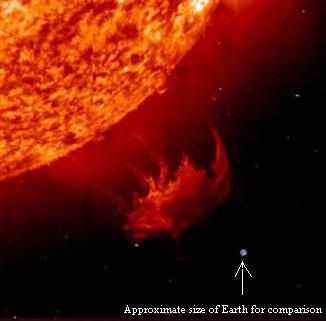|
|
Post by glactus on Feb 18, 2008 21:04:29 GMT
 The Sun is constantly losing mass. Our closest star is shedding material through the solar wind, coronal mass ejections and by simply generating light. As the burning giant begins a new solar cycle, it continues to lose about 6 billion kilograms of mass per second. This may seem like a lot, but when compared with the total mass of the Sun, this rate of mass loss is miniscule. However small the mass loss, the mass of the Sun is not constant. So, when using the Astronomical Unit (AU), problems will begin to surface in astronomical calculations as this "universal constant" is based on the mass of the Sun… The Astronomical Unit is commonly used to describe distances within the Solar System. For instance, one AU is approximately the mean distance from the Sun to Earth orbit (defined as 149,597,870.691 kilometres). Mars has an average orbit of 1.5AU, Mercury has an average of about 0.4AU… But how is the distance of one AU defined? The most common thought to be derived at that it is the mean distance of the Sun-Earth orbit, and officially defined as: the radius of an unperturbed circular orbit that a massless body would revolve about the Sun in one astronomical year. There lies the problem. The official calculation is based on "k", a constant based on the estimated constant mass of the Sun. But the mass of the Sun is not constant.   credits: Map and text: universetoday.co www.universetoday.com/wp-content/uploads/2008/02/sunmass.jpgPresenter: Ian O'neill |
|